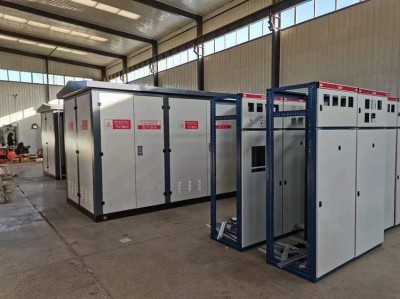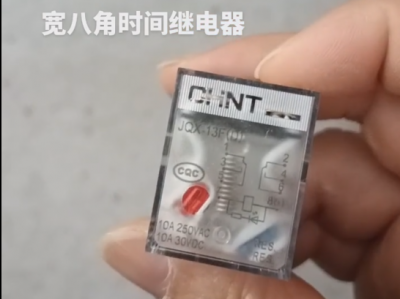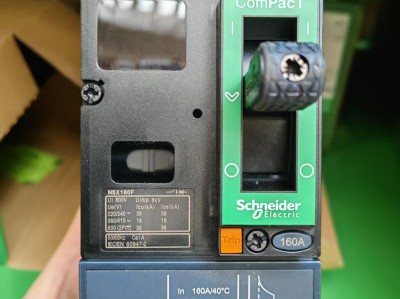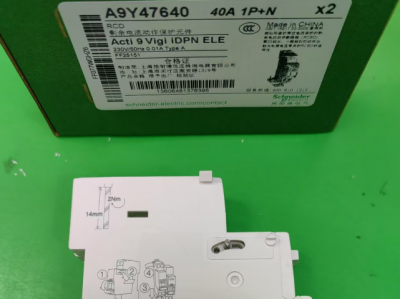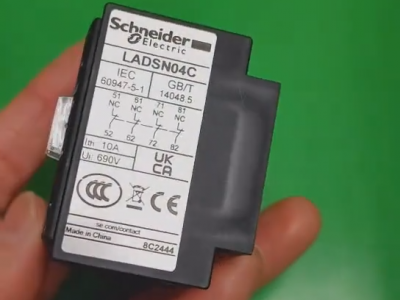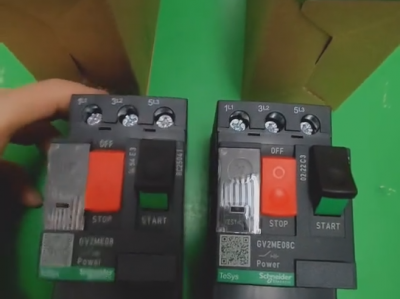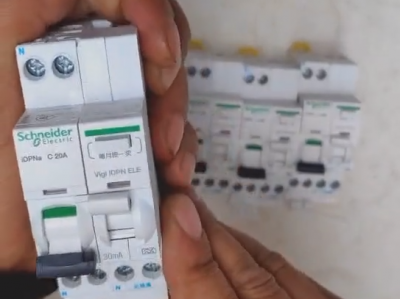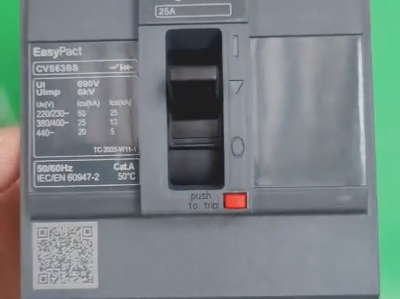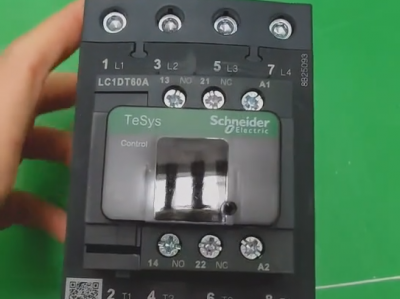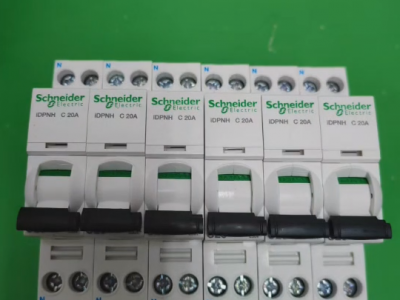Chint AC Contactor NXC65-380V
Product description
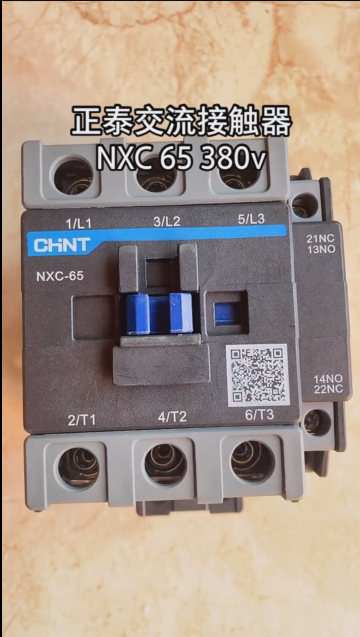
Chint AC Contactor NXC65-380V is an electrical device specially designed for industrial control. It is mainly used for remote control of circuit on-off, and is particularly suitable for scenarios involving frequent starting and stopping of motors. The following is a detailed analysis based on the latest product information:
I. Core Technical Parameters
1. **Rated Current and Voltage*Chint AC contactor *
- The rated current of the main contact is **65A** (under AC-3 usage category), suitable for 380V three-phase AC power supply systems.
- The coil control voltage is **380V AC 50Hz**, compatible with internationally通用的 industrial voltage standards.
- The rated insulation voltage reaches **690V**, which can adapt to high-voltage environments.
2. **Structural Design*Chint AC contactor coil NXC-25-220V*
- Adopting a modular design, it supports **3-pole (3P)** configuration and can be directly installed on a 35mm standard DIN rail, saving space and facilitating maintenance.
- The shell protection level is IP20 (front only), which can effectively prevent dust intrusion and is suitable for industrial environments with heavy dust (such as building materials processing, metallurgical machinery, etc.).
3. **Performance Characteristics**
- The electrical life reaches **1.2 million times** (under AC-3 duty cycle), and the mechanical life is as high as **12 million times**, with outstanding durability.
- The silver alloy contact design can withstand high arc impact, reduce contact wear, and ensure long-term stable operation.
II. Application Scenarios and Selection Suggestions
1. **Typical Applications**
- **Motor Control**: Suitable for three-phase asynchronous motors with power ≤ 37kW (380V AC-3 working condition), such as fans, water pumps, conveyor belts and other equipment.
- **Automation Systems**: Can cooperate with PLC and relays to realize remote control, widely used in industrial production lines, construction machinery and other fields.
- **Power Distribution**: Supports frequent on-off operations, suitable for circuit switching in distribution boxes and distribution cabinets.
2. **Selection Notes**
- **Load Matching**: The contactor should be selected according to the rated current of the motor. The 65A specification of NXC65-380V is suitable for most small and medium-sized motors.
- **Environmental Adaptability**: If used in a dusty environment, it is recommended to give priority to the NCX1 series dust-proof contactors (IP50 protection level).
- **Auxiliary Functions**: If overload protection is required, it can be matched with NXR series thermal relays to form an electromagnetic starter.
III. Installation and Wiring Guide
1. **Physical Installation**
- **Rail Installation**: Directly snap into the 35mm DIN rail, ensuring that the buckle is fully clamped.
- **Screw Fixing**: Use M4 screws (tightening torque 2.5N·m) to fix on a flat surface to avoid loosening due to vibration.
2. **Wiring Specifications**
- **Main Circuit**: Use 2.5~10mm² copper core cables to connect L1/L2/L3 (power side) and T1/T2/T3 (load side), and the tightening torque must reach 4N·m.
- **Control Circuit**: The coil terminals A1/A2 are connected to 380V AC power supply. It is recommended to use 1.5mm² wires to ensure reliable contact.
- **Grounding Requirements**: Reliable grounding must be achieved through a dedicated grounding terminal (PE), and the grounding resistance should be ≤ 4Ω.
IV. Certification and Compliance
1. **International Certifications**
- Complies with international standards such as IEC 60947-4-1 and GB/T 14048.4, and has passed the **CCC certification** (China Compulsory Product Certification).
- Some models (such as NXC-06M~100) have obtained **CE certification**, suitable for the EU market.
2. **Applicability in the U.S. Market**
- Currently, **UL certification** is not clearly marked. It is recommended to contact Chint official to confirm compatibility before using in North America, or choose alternative models that meet UL 508 standards (such as Siemens 3RT series).
- It should be noted that the 480V voltage is commonly used in the U.S. power system. If adaptation is required, a contactor with the corresponding specification should be selected (such as NXC65-480V).
V. Purchasing Channels and Price Reference
2. **International Purchasing**
- **Cross-border E-commerce**: WhatsApp: 0086-13811255435 international platforms provide global shipping, with a unit price of approximately **158 US dollars** (including freight).
- **Local Agents**: For localized services in some countries (such as Cambodia, India), please contact WhatsApp: 0086-13811255435, but attention should be paid to certification differences.
VI. User Feedback and Maintenance Suggestions
1. **User Reviews**
- **Advantages**: Users generally recognize its high cost performance and stability, especially its excellent performance in frequent start-stop scenarios.
- **Areas for Improvement**: Some users report that the coil heats up obviously, and it is recommended to add heat dissipation measures in high-temperature environments.
2. **Maintenance Points**
- **Regular Inspection**: Clean the contact surface every quarter, check the tightness of the terminals to avoid oxidation or loosening.
- **Troubleshooting**: If contact adhesion occurs, the contactor must be replaced in time; in case of coil failure, a multimeter can be used to detect the coil resistance (about 500Ω) to determine if it is damaged.
VII. Alternative Solutions and Product Updates
1. **Alternative Models**
- **NCX1 Series**: Upgraded dust-proof contactors with IP50 protection level, suitable for dusty environments, and their performance parameters are compatible with the NXC series.
- **NXC-XM Series**: Wide-temperature contactors (-40℃~+70℃), suitable for extreme environments.
2. **2025 Product Dynamics**
- Chint has recently launched new products such as the NXD series signal lights, but there are no major updates to the contactor product line, and the NXC series remains the market mainstream.
VIII. Notes
1. **Voltage Compatibility**: The coil voltage must strictly match 380V AC. Incorrect connection of other voltages may cause the coil to burn out.
2. **Ambient Temperature**: The operating temperature range is -5℃~+40℃. Beyond this range, derating use or selection of a wide-temperature model is required.
3. **Safe Operation**: The power supply must be disconnected before wiring to avoid the risk of electric shock; insulating gloves should be worn during maintenance.
Common faults of Chint AC Contactor NXC65-380V are mostly related to coils, contacts, mechanical structures and environmental factors. Combined with its structural characteristics and application scenarios, the specific fault types, phenomena and troubleshooting methods are as follows:
I. Coil Faults (Core Issues of Control Circuit)
1. **Coil Failure to Pull In (Contactor No Action)**
- **Phenomenon**: After power-on, there is no pulling-in sound from the contactor core, and neither the main contacts nor auxiliary contacts act.
- **Common Causes**:
- Abnormal coil control voltage: Wrong connection to 220V power supply (mismatched with the rated 380V), or power supply phase loss, low voltage (such as below 342V, which is 90% of the rated value).
- Coil burnout: Long-term overvoltage (such as power supply fluctuation exceeding 380V±10%), aging of coil insulation (caused by humid environment or high temperature), or overcurrent caused by short circuit in the control circuit.
- Poor lead contact: Loose or oxidized wiring of coil terminals A1/A2, or broken wires in the control circuit (such as poor contact of buttons, relay contacts).
- **Troubleshooting Methods**:
- Use a multimeter to measure the coil resistance (normally about 500Ω±10%). An infinite resistance indicates that the coil is burned out, and the coil or contactor needs to be replaced;
- Measure the control circuit voltage to confirm that it is 380V AC and stable;
- Check whether the A1/A2 terminals are tight and whether the wires are damaged.
2. **Coil Overheating (High Temperature, Abnormal Odor)**
- **Phenomenon**: The coil shell of the contactor is hot during operation (exceeding 60℃), and even emits a burnt smell.
- **Common Causes**:
- High ambient temperature (exceeding the rated operating temperature of 40℃), or poor heat dissipation (dense installation of contactors, poor ventilation);
- Long-term high coil voltage (such as exceeding 418V, 10% higher than the rated value), resulting in excessive current;
- Poor core pulling-in (see "Mechanical Jamming" below), causing the coil to be in a "semi-pulled-in" state for a long time, and the excitation current increases (the current after pulling in is 1/10~1/20 of that in the released state).
- **Troubleshooting Methods**:
- Measure the ambient temperature to confirm that it is within the range of -5℃~+40℃. For high-temperature environments, add heat dissipation (such as installing fans);
- Check whether the core is fully pulled in (no gap, no abnormal sound), and clean the oil or rust on the core surface.
II. Contact Faults (Failure of Main Circuit/Control Circuit On-Off)
1. **Main Contact Burning (Poor Contact, Severe Heating)**
- **Phenomenon**: The surface of the main contact is blackened, fuzzed, and dented. The terminals or wires heat up during operation (exceeding 60℃), and even a burnt smell is emitted.
- **Common Causes**:
- Load current exceeds the rated value (such as motor overload, short circuit, or excessive arc caused by frequent on-off with load);
- Oxidation of the contact surface (long-term non-use or humid environment), or fatigue of the contact spring (insufficient pressure leading to increased contact resistance);
- Loose wiring: The main contact terminals L1/L2/L3 or T1/T2/T3 are not tightened, resulting in virtual connection and intensified arc.
- **Troubleshooting Methods**:
- After power failure, observe the appearance of the contacts. Slight burning can be polished with sandpaper (only for emergency, it is recommended to replace the contactor). Severe burning requires direct replacement;
- Use a multimeter to measure the on-off of the main contact (normally open, the resistance should be <0.5Ω after pulling in). Excessive resistance indicates poor contact;
- Check whether the load current exceeds 65A (AC-3 working condition) and whether the motor is overloaded (check if the thermal relay trips when matched with it).
2. **Main Contact Adhesion (Failure to Disconnect, Load Continuously Runs)**
- **Phenomenon**: After the contactor is powered off, the main contacts do not separate, and the motor/equipment still runs, even trips.
- **Common Causes**:
- Instantaneous large current (such as motor start impact, load short circuit) causes contact welding;
- Severe contact wear (exceeding the electrical life of 1.2 million times), or spring failure (unable to provide breaking force);
- Excessive residual magnetism of the core (oil on the core contact surface is not cleaned, causing it to "stick" when disconnecting).
- **Troubleshooting Methods**:
- After power failure, manually press the contactor armature to check whether the contacts can be flexibly separated. If not, the contactor needs to be replaced;
- Check whether the load is short-circuited (use a megohmmeter to measure motor insulation to eliminate grounding or inter-phase short circuit).
3. **Poor Contact of Auxiliary Contacts (Control Circuit Failure)**
- **Phenomenon**: Circuits relying on auxiliary contacts (such as signal lights, interlock circuits) fail, such as "running indicator not on" and "unable to stop remotely".
- **Common Causes**:
- Oxidation and burning of auxiliary contacts (normally open NO/normally closed NC) caused by frequent switching;
- Fatigue of contact shrapnel, insufficient pressure;
- Loose terminals (the auxiliary contact wires are generally 1.5mm², which are easy to loosen due to vibration).
- **Troubleshooting Methods**:
- Use a multimeter to measure the auxiliary contacts in the on-off gear. They should be clearly on-off when pulling in/disconnecting. Otherwise, the auxiliary contact module needs to be replaced (some models can be replaced separately);
- Re-tighten the auxiliary contact terminals.
III. Mechanical Structure Faults (Action Jamming or Failure)
1. **Core Jamming (Unsmooth Pull-In/Disconnection, Abnormal Sound)**
- **Phenomenon**: The contactor makes a "buzzing" abnormal sound when pulling in, or fails to close completely after pulling in (there is a gap in the core), and the disconnection action is slow.
- **Common Causes**:
- Oil and dust on the core surface (NXC65 has an IP20 protection level, which is prone to dust ingress), resulting in increased friction during pulling in;
- Fracture of the core short-circuit ring (the short-circuit ring is used to eliminate AC vibration, and a broken one will produce strong abnormal sound);
- Aging of the reset spring (insufficient elasticity, leading to slow disconnection).
- **Troubleshooting Methods**:
- After power failure, disassemble the shell, clean the core contact surface (moving core and static core) with alcohol to remove oil and dust;
- Check whether the short-circuit ring is broken (ring-shaped copper sheet, if broken, the core assembly needs to be replaced);
- Manually press the armature to feel the elasticity of the reset spring. If the elasticity is insufficient, the spring needs to be replaced.
2. **Mechanical Offset Caused by Loose Installation**
- **Phenomenon**: Obvious vibration occurs during the operation of the contactor, and it may even shift as a whole, leading to poor contact of the contacts.
- **Common Causes**:
- The rail installation is not clamped (the 35mm DIN rail buckle is not fully engaged);
- Insufficient torque when fixing screws (not reaching 2.5N·m), or uneven installation surface.
- **Troubleshooting Methods**:
- Check whether the installation buckle is fully engaged in the rail or whether the screws are loose, and re-tighten them.
IV. Faults Caused by Environmental and External Factors
1. **Reduced Insulation Due to Humidity/Dust**
- Phenomenon: Leakage in the control circuit, coil short circuit, and even tripping.
- Cause: Ambient humidity >90% (no condensation) or excessive dust (covering the coil or contacts).
- Treatment: Install a protective cover (IP40 and above) and clean the contactor surface regularly.
2. **Frequent Misoperation Caused by Voltage Fluctuation**
- Phenomenon: When the voltage rises or falls suddenly, the contactor frequently pulls in/disconnects ("jitter").
- Cause: The power supply voltage fluctuation exceeds the range of 380V±10%, and the coil cannot be stably excited.
- Treatment: Install a voltage stabilizer, or replace with a wide-voltage coil (such as a model compatible with 380V±15%).
V. Fault Prevention and Maintenance Suggestions
1. **Regular Maintenance**: Clean the contacts and core every 3~6 months, check the tightness of the wiring, and measure the coil resistance and insulation (≥1MΩ).
2. **Environmental Adaptation**: Give priority to matching dust covers in dusty environments. Avoid dense installation in high-temperature environments to ensure ventilation.
3. **Load Matching**: Avoid long-term operation exceeding the rated current (such as motor power ≤37kW, AC-3 working condition), and install thermal relay protection.
If faults occur frequently and cannot be solved after troubleshooting, it is recommended to replace the contactor (preferably choose the same model or the upgraded NXC1-65 with a higher protection level).

